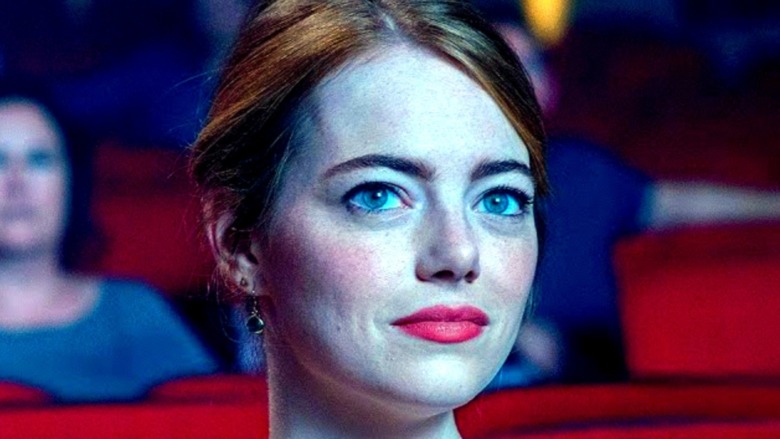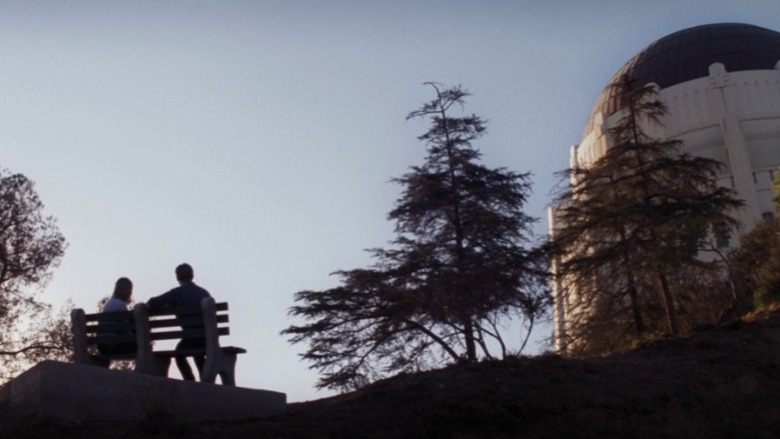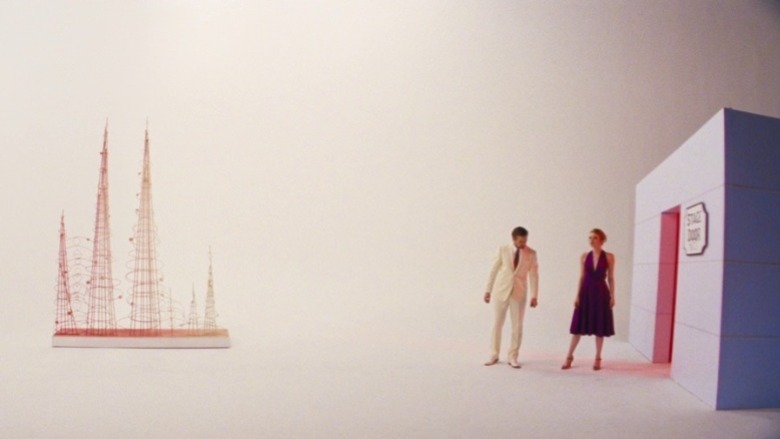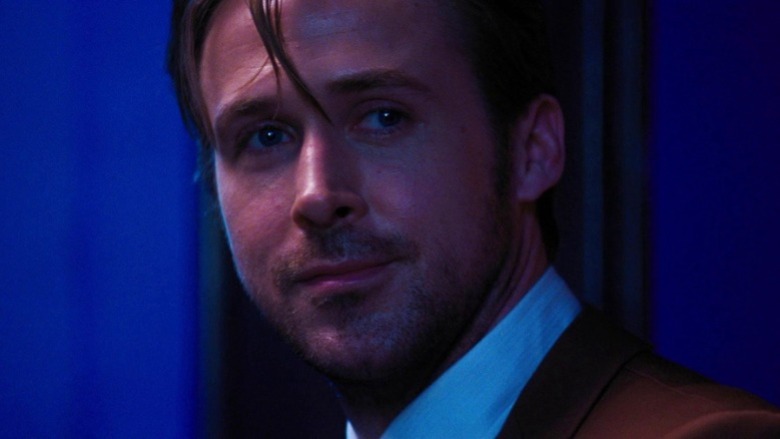The Ending Of La La Land Explained
Remember the "La La Land" Wars? If you were in any space where people discussed movies circa 2016-2017, odds are that you either witnessed or took part in at least one argument about Damien Chazelle's throwback musical. Looking back now, it's almost unthinkable that such an earnest, sweet-natured, basically enjoyable movie was able to spur such a degree of heated controversy online and offline, but so it was.
Now that the dust of hype and award season has long settled, it's easier to regard "La La Land" with a little more clarity, for both its strengths and faults. And it's easier, too, to zero in on what exactly made it such a critical hot potato at the time of its release. Basically, "La La Land" was controversial because it was contradictory: Despite its facade of a candy-colored nostalgia trip through the musicals of Hollywood's Golden Age, it was, at heart, a very ambivalent, very melancholy lament for the insurmountable distances between dreams and reality. It was weirder, wobblier, and much more of a bummer than the highest praises made it out to be — and it certainly demanded a lot more time to chew on and process than the hype train was willing to afford it.
Consider its ending: One of the most overwhelming and exhilarating cinematic moments of the 2010s, the montage that closes "La La Land" is a case study in how to sweep an audience off its feet while quietly bringing it down to shakier ground than before. It's the peak of the movie's endorphin-rush engineering, but it's also the perfect summation of all its tough-to-swallow themes. Here's why it's so brilliant.
La La Land isn't interested in whether Mia and Seb "make it"
The proper climax of "La La Land" happens when Mia (Emma Stone) goes in for her last-ditch audition, months after having given up on her dream of stardom and returned home to Boulder City. She sings "Audition (The Fools Who Dream)," the movie's most heartrending song, and then — before we have a chance to see how the casting people reacted — the movie fades to a casual, nervous conversation between Mia and Seb (Ryan Gosling), both venting their uncertainties about what's going to happen now.
Common storytelling wisdom would dictate that we should then see the process that follows on from Mia's knockout audition. This is where "La La Land" sets itself apart from conventional stories about showbiz, by overlooking that process altogether. Instead, it skips ahead to Mia and Seb's days of glory, as if to downplay them. We think, up to this point, that the movie's central question is "Will they make it?" But Damien Chazelle answers that particular question with nothing more than a shrug: "Yeah, sure, they will eventually. But that's not the point."
As in "Whiplash" and "First Man," Chazelle's main goal is not to key us in on the story's driving ambitions, but to make us think critically about what's behind them. There's no joy to be had in the revelation that Mia is now a famous actress and Seb has opened up his jazz club — if anything, it stings that they're no longer together. No, what the movie is really asking underneath the glitz is "Why do they want to make it? What are Hollywood dreams made of?" And the answer, as suggested by the ending montage, is not an easy one.
The closing montage gets to the root of artists' platonic love for showbiz
So, Mia Dolan is now a famous actress with a loving husband and son, and Seb Wilder owns a hot jazz club. By chance, Mia and her family find themselves at Seb's, and, unable to tell her all the things he wants to, Seb simply plays their theme on the piano.
The fact that the closing what-could-have-been montage is sparked by the music of their earliest memories is no fortuitous choice. Like all forms of artistic drive, Mia and Seb's dream of a perfect life together begins with the simple exhilaration of falling in love, only to erupt into fantasy. The initial promise of their relationship is intertwined with their youthful love for movies and music because those yearnings are one and the same: Hollywood, with its appeal to humans' aesthetic sensibility, convinces people all over the world that a life in show business will be a life forever spent in the elation of their most cherished art. It's a lot like starting a relationship with your crush — and the reality can be just as harsh.
For Mia and Seb, the reality is that they can make it to the top of the world, but their life will remain just that — a regular life, full of challenges and uncertainties. Not for nothing, their fantasy contains many of the same situational markers as their reality — the dance, the audition, the visit to the club — but in the fantasy these moments are cut better, look better, and feel better. They don't long for things, but for feelings. Hollywood feelings.
La La Land understands dreams for what they are
But there's no such thing as Hollywood love, and no such thing as a Hollywood life. It's all a dream, and it is beautiful, but it's also momentary. It lasts for the duration of the right song. That point of view informs "La La Land'"s bold, counter-intuitive vision of the movie musical, in which reality is dreary and imperfect. And a musical number is a foolhardy push past the dreariness and towards the sublime.
Emphasis on "push" — it would have been easier for "La La Land" to cast triple-threat actor-singer-dancers in the lead roles, ones whose talent would allow them to effortlessly evaporate into the Technicolor wonder once the music started. Instead, it cast Emma Stone and Ryan Gosling, great dramatic actors whose effort to hit the notes and land the jumps is always apparent. Though Chazelle and songwriters Justin Hurwitz, Benj Pasek, and Justin Paul didn't invent the ambivalent musical themselves, they introduce an element that even genre precursors like "The Umbrellas of Cherbourg" and "An American in Paris" elided, an element that destined "La La Land" to be controversial: fallibility. The fantasy bubble, no matter how gorgeous, always seems to burst. It only really seems invulnerable during the closing montage, because movies are dreams.
"La La Land" ends, of course, by definitively bursting the bubble, because it has to. Mia and Seb exchange a happy-sad glance, and go their separate ways. But not before the movie has, through the sheer Hollywood wonder of the closing montage, paid due homage to our way of chasing the impossible — and to the art that yields. Here's to the ones who dream, foolish as they may seem.



